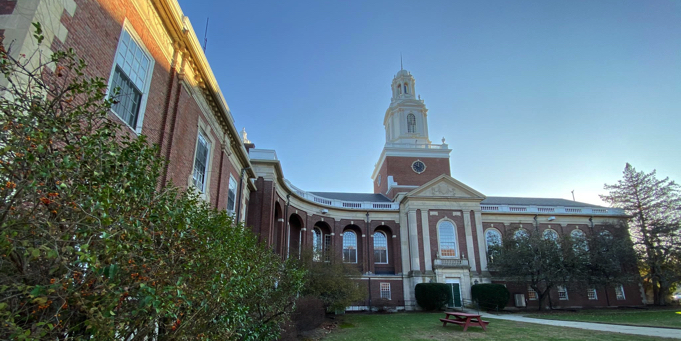Watertown, Brookline and Cambridge recently became the first municipalities to opt-in to the State’s new Specialized Stretch Code. The new Massachusetts Specialized Stretch Code requires new construction be fully wired and insulated as a net-zero building, but does not ban fossil-fuel installations.
Newton City Council will hold a public hearing on Wednesday, February 15 at 7 pm to discuss adopting the code for our city. The meeting will include a presentation by the Massachusetts Department of Energy Resources.
1. What is a stretch code?
A stretch code is part of the state building code which sets “above code” requirements for building energy performance compared to the base energy code – aiming to reduce greenhouse gas emissions related to the building sector to comply with statewide legal limits for 2025, 2030, 2040 and 2050.
2. How is a stretch code adopted?
A stretch code is adopted (or rescinded) by municipal action – a city council or town meeting vote.
3. How many MA communities have adopted the current Stretch Code?
A total of 300 “Green Communities,” representing nearly 90% of the state’s population, have adopted the current Stretch Code, available since 2009.
4. What is the impetus for both the Updated Stretch Code and Municipal Opt-In Specialized Code?
The climate bill resulting in A Next-Generation Roadmap for Massachusetts Climate Policy (2011) directed DOER’s efforts to revise the stretch code to meet emissions reduction limits mandated by the Global Warming Solutions Act (2008).
5. Does the Municipal Opt-In Specialized Code apply to existing structures?
No, the Municipal Opt-In Specialized Code applies only to new construction and not to existing structures. Additions and renovations, depending on size, are regulated by the Updated Stretch Code and Base Code.
6. What is the main difference between the Updated Stretch Code vs Municipal Opt-In Specialized code?
For all Green Communities, the Updated Stretch Code automatically took effect on January 1, 2023. Certain provisions took effect immediately; other provisions become effective on July 1, 2023 or July 1, 2024. By contrast, the Municipal Opt-In Specialized Code requires municipal adoption with an effective date decided by the municipality.
7. Are there other differences?
The Municipal Opt-In Specialized Code builds on the Updated Stretch Code with several important additional provisions that help meet legal emissions reduction limits, promote the cost-effective transition to all-electric buildings and preservation of property values. To better understand these differences in detail, see DOER’s MA Stretch Energy Codes, Northeast Energy Efficiency Partnerships’ Commercial and Residential resources, MassSave’s MA Energy Code Training, Resnet’s Home Energy Rating System HERS Index, and Passive House Massachusetts’ website.
8. What are these stricter provisions required by the Municipal Opt-In Specialized Code?
- All Mixed-Fuel Residential and Commercial buildings must provide pre-wiring for electric space heating, electric water heating, and electric appliances. This will accelerate the clean energy transition and avoid cost premiums to convert these buildings to all-electric in the future.
- Mixed-Fuel Residential buildings greater than 4,000 square feet (i.e., large homes) must achieve HERS 0 or PHIUS ZERO, meeting energy efficiency requirements prior to renewable energy offsets. These exemplary performance standards encourage large homes to “go All-Electric.”
- Mixed-Fuel Commercial buildings greater than 20,000 square feet must offset their emissions by providing 1.5W of on-site solar panels for each square foot of the largest three floors or not less than 75% of the Potential Solar Zone Area – OR— achieve Passive House certification.
- Starting July 1, 2024, Multi-Family residential buildings greater than 12,000 square feet must achieve pre- certification to Passive House Standards. Even without this code requirement, many affordable housing projects currently being developed in MA are being designed to meet this standard.
9. Will the Municipal Opt-In-Specialized Code discourage the creation of affordable housing?
No, because financial incentives through Mass Save and competitive incentives from the Department of Housing and Community Development make this attractive. All-Electric buildings entail little if any additional construction costs. Third party power purchase agreements provide solar energy with no upfront cost. The result is affordable housing that delivers comfort and energy efficiency in perpetuity, providing affordable housing residents with health benefits and lower energy bills over time.
10. Why adopt the Municipal Opt-In Specialized Code?
The Municipal Opt-In Specialized Code requires pre-wiring, avoiding costly retrofits down the road for which consumers will inevitably have to pay. It also has other requirements to help meet our climate goals. Additionally, early adopters may be well positioned to receive priority training, technical advice, and incentives.
11. Why are fossil fuels permitted if the climate bill required DOER to produce a “net zero” code?
The definition of “Net Zero” is evolving. The Federal Department of Energy (DOE) compiled 20+ net zero definitions used in official publications over the past decade; many definitions permit fossil fuel use. Both the Updated Stretch Code and Municipal Opt-In Specialized Code offer Mixed Fuel and All Electric compliance pathways. This preserves market choice at a time when economic uncertainty makes utility pricing highly volatile, and utility costs vary significantly from one community to another.
12. Is it possible to install a gas cooktop, water heater or other appliance along with all-electric heating and cooling?
Yes, but this would be a Mixed Fuel building and must meet the Mixed Fuel requirements including installation of electrical service and wiring for eventual conversion of those gas appliances to electric. All Electric buildings allow fossil fuels for emergency backup generation systems.
13. What is TEDI and how is it calculated?
TEDI stands for “Thermal Energy Demand Intensity.” Like, EUI, “Energy Use Intensity,” TEDI is a computed value derived from building energy modeling software such as eQuest. Whereas EUI measures annual energy consumption, TEDI measures annual thermal demand (not usage), reflecting the building envelope and mechanical design quality. DOER has issued 2023 Technical Guidance for Massachusetts Stretch Codes and Guidelines for TEDI Modeling, explaining, among many other things, how TEDI values are calculated.
14. How many communities are mobilizing to adopt the Municipal Opt-In Specialized Code?
At least 20 communities have indicated their intention to vote on the adoption of the Municipal Opt-In Specialized Code this spring. These communities include cities and towns.
15. Won’t the electric grid be overwhelmed by building electrification?
Today, the electric grid is operating at 20% below the all-time system electric peak in 2006, due to energy efficiency measures. Nearly 50% greater energy efficiency will be gained by switching from fossil fuels to electric vehicles, electric heat pumps, and electric appliances. Electric heat pumps are 2.5 to 4 times more efficient than the most efficient gas boiler. By 2035, building electrification will cause the grid to switch from summer peaking to winter peaking. This will not require a lot of transmission upgrades in the next 10 years. By 2050, New England capacity is planned to double from 25 to 50GW; an additional 10 GW is planned to be available by 2035. The electric grid is mandated to get greener by 3% per year.
FAQs provided by Northeast Energy Efficiency Partnerships which facilitates the MA Net Zero Buildings Coalition.



Recently on Twitter